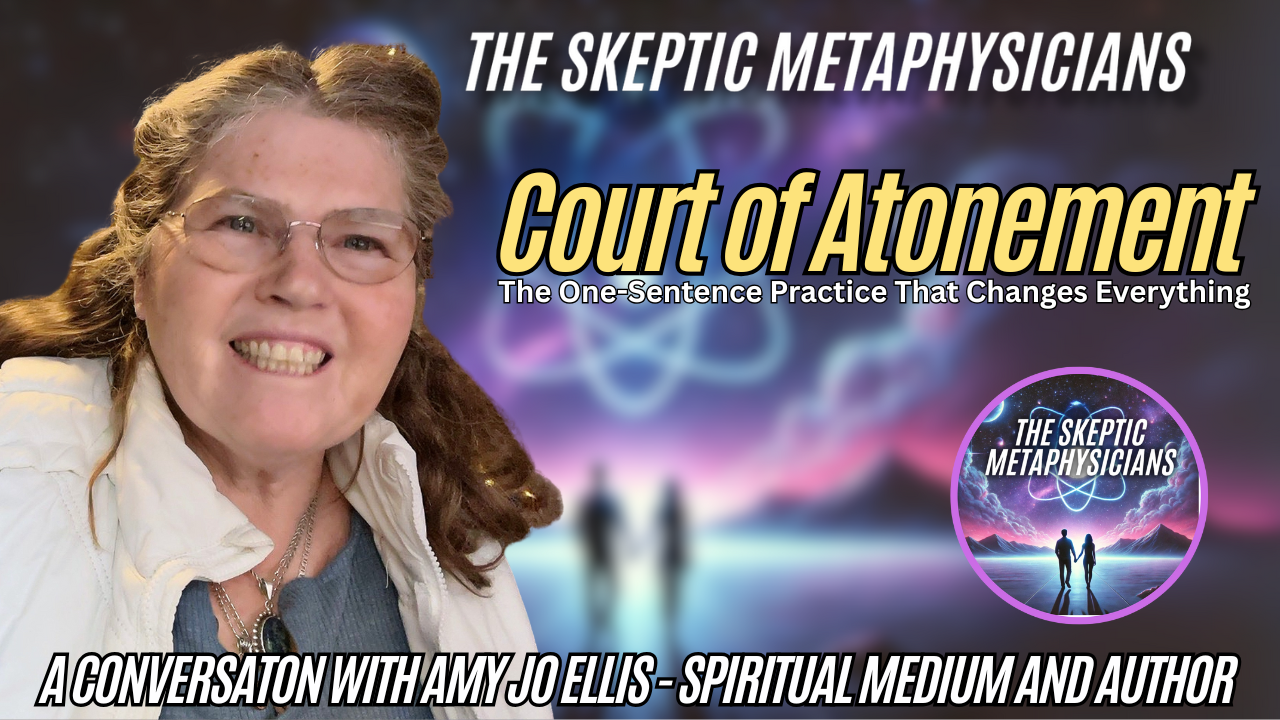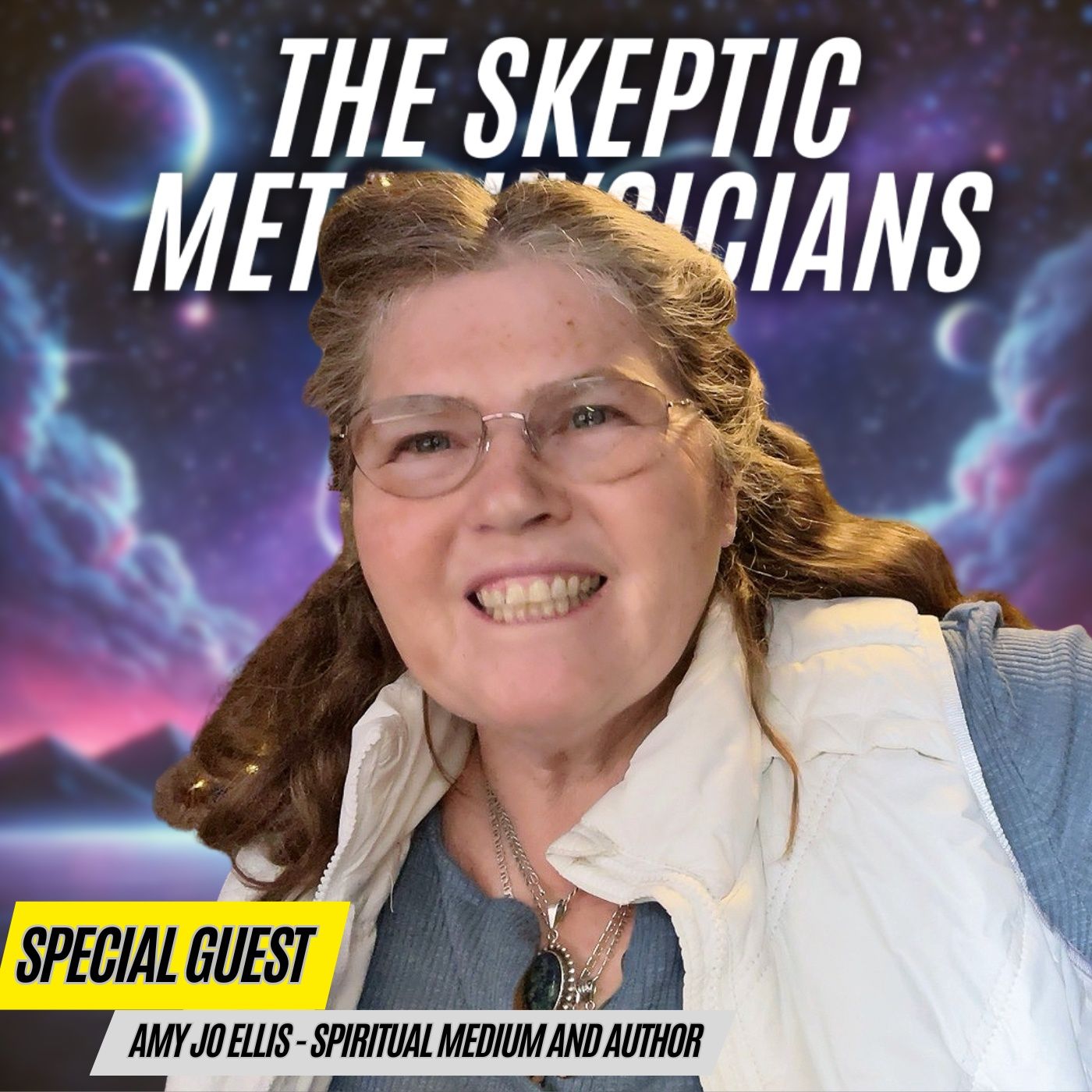
Imagine healing years of family conflict, workplace tension, or deep emotional wounds, not with years of therapy, not with elaborate rituals, but with a single paragraph. Sounds impossible, right? Yet this is exactly what Amy Jo Ellis, spiritual medium, singer-songwriter, and creator of the Court of Atonement, has been sharing with thousands around the world.
What started as a simple request to her guides; “How do I reunite my husband with his estranged siblings?”, has grown into an international healing movement that’s touching lives across continents. Today, seekers everywhere are discovering that the Court of Atonement offers not just resolution, but transformation at the soul level, beyond the limits of time, space, and human ego.
This blog will take you deep into Amy Jo’s story, the mechanics of the Court of Atonement, its spiritual foundations, and the miraculous real-world results it has generated. Along the way, we’ll explore why skepticism plays a vital role in channeling, how names carry profound spiritual resonance, and how you can begin using this modality in your own life.
Amy Jo Ellis: From Music to Mysticism
Before she became known as the channel for the Court of Atonement, Amy Jo Ellis was recognized for her musical gifts. Her soulful songwriting moved audiences at spiritual events from California to Puerto Rico. At one retreat, Neale Donald Walsch, author of Conversations with God, invited her to perform at his next event. At another, the Dalai Lama himself walked on stage, hugged her, and said her song Remember Who You Are had brought him to tears.
But Amy Jo’s life shifted dramatically in 2013. Faced with painful family estrangements, she turned to her guides for help. What she received was a process unlike anything she had ever heard of: a Court of Atonement, a spiritual courtroom where souls could meet, communicate, and resolve conflict beyond the emotional baggage of human experience.
What Is the Court of Atonement?
At its core, the Court of Atonement is disarmingly simple. As Amy Jo explains:
“It’s one soul talking to another soul, resolving conflict at the point of origin. Our higher selves understand what happened and why, and when they reconcile, that resolution filters back into our nervous systems. The problems of the past stop triggering us.”
The process can be condensed into four steps:
-
State your full name (as it appears on your birth certificate).
-
Invoke the Court of Atonement.
-
Name the conflict or individuals involved.
-
Ask for resolution, healing, or dissolution of the negative energy.
That’s it. No complex ceremonies, no years of training. Just one clear request.
Why does it work? According to Amy Jo, it works because our souls exist outside of time and space. When invited, they can step into this energetic “courtroom” and settle matters that the human mind has struggled with, whether those matters involve betrayal, grief, estrangement, or even patterns passed down through generations.
A Family Feud Resolved
The first test of the Court of Atonement was close to home. Amy Jo’s husband hadn’t heard from his siblings in years. Relationships were strained, birthdays forgotten, wounds left unspoken. After channeling the process, Amy Jo quietly wrote out the paragraph and gave it to her husband.
Six weeks later, on his birthday, all five of his siblings called. Out of the blue. Without prompting. The healing had begun.
This experience confirmed for Amy Jo that what she had received was not just a passing thought, but a divinely inspired tool for reconciliation.
From Skepticism to Viral Movement
Amy Jo describes herself not only as a metaphysician but also as a skeptic.
“Being skeptical is healthy. As channels, we should always question where the information is coming from. Healthy skepticism keeps us from following blindly down the wrong path.”
Her initial skepticism led her to Google “Court of Atonement” to see if it existed elsewhere. Nothing came up. That blank search result was the beginning of a new chapter.
Amy Jo published a short 48-page eBook explaining the process, priced at just $5. She shared the link once in a Facebook group about energy healing. Within a year, the book had gone viral, translated into multiple languages, and embraced by healers worldwide. Renowned dowser and healer Raymon Grace was so impressed that he dedicated his entire newsletter to endorsing her work.
Today, the Court of Atonement has been used in contexts ranging from family healing to workplace disputes, from trauma recovery to spiritual awakening.
How It Works on the Soul Level
To understand the mechanics, Amy Jo often uses the metaphor of a relationship misunderstanding. Imagine a wife waiting with a candlelit dinner. Her husband doesn’t show. She assumes betrayal, anger flares, and accusations fly. But if she knew the truth; that he had been delayed after nearly losing his job, her anger would dissolve instantly.
The Court of Atonement facilitates this kind of soul-level understanding. Souls meet in a neutral, timeless space, exchange truth, and release the distortions of assumption, resentment, or unspoken pain. The nervous system registers the shift, and the human personality begins to relax.
The Power of Names
One of the most intriguing aspects of the Court of Atonement is the emphasis on using full birth names. Amy Jo learned early on that names carry energetic signatures.
In one reading, she struggled to connect with the soul of a recently deceased girl named “Sarah.” It wasn’t until she learned that Sarah had been adopted, and used her birth name, that the communication opened.
Names, Amy Jo explains, are like metaphysical ID cards. Using them correctly helps align the soul’s energetic records, ensuring the process flows smoothly.
Beyond Family Healing: Wider Applications
While the Court of Atonement began with family reconciliation, its scope has expanded dramatically:
-
Healing Generational Trauma: By placing ancestors into the Court, families can stop repeating patterns of abuse, estrangement, or addiction.
-
Workplace Conflicts: Employees and managers have reported improved relationships after unresolved tensions were addressed at the soul level.
-
Personal Growth: Individuals use the Court to release anger, resentment, or limiting beliefs that keep them stuck.
-
Global Issues: Some practitioners even place world leaders into the Court, asking for resolution of the causes behind conflict and strife.
Amy Jo emphasizes, however, that the process is never coercive:
“The soul always has the right to decline. This isn’t about imposing will, it’s about offering an opportunity for peace.”
Stories of Transformation
Countless testimonials have poured in from people using the Court of Atonement. Here are just a few examples shared during Amy Jo’s teaching:
-
A bedridden man: Bedridden for nine years after a devastating breakup, he began visualizing healing through the Court. Within weeks, he was sitting up, then walking, then working again.
-
A daughter’s apology: A mother placed her daughter into the Court regarding troubled relationships. Days later, her daughter’s high school boyfriend called unexpectedly to apologize for the way he had treated her.
-
Family reconciliation: Listeners of The Skeptic Metaphysicians witnessed live demonstrations where family conflicts felt lighter, unresolved grudges began to soften, and participants reported feeling profound relief.
Why Skeptics Should Care
Skeptics may dismiss the Court of Atonement as wishful thinking. But consider this: research in psychology confirms that forgiveness reduces stress, strengthens immune function, and improves overall well-being. Placebo studies consistently prove the power of expectation in healing.
The Court of Atonement may function, in part, by shifting perception and opening the nervous system to healing. Whether viewed as metaphysical magic or psychological reframing, the results are undeniable: people feel better, relationships improve, and peace emerges.
How to Use the Court of Atonement Yourself
Amy Jo insists that anyone can use this process, no certification or special ability required. Here’s a simple version you can try right now:
-
Say your full birth name out loud.
-
Declare: “I place [Name of Person/People/Situation] into a full Court of Atonement.”
-
Ask: “I request to analyze our timelines and resolve any and all conflicts at their points of origin.”
-
Release the outcome.
The key is not to force results, but to allow the soul-level resolution to unfold in its own timing.
Practical Takeaways
-
Healing doesn’t always require complexity. Sometimes the most profound tools are the simplest.
-
Conflict often persists because of misunderstanding; the Court facilitates soul-level clarity.
-
Names carry energetic power; use them carefully.
-
Skepticism and discernment are healthy companions on the spiritual path.
-
The Court of Atonement can be applied to family, personal, professional, and even global conflicts.
Final Reflections
Amy Jo Ellis never set out to become a spiritual teacher. She simply wanted to heal her own family’s wounds. Yet the process she channeled has rippled outward, touching lives across the world.
The Court of Atonement is a reminder that reconciliation is always possible...that beneath anger, fear, and estrangement lies the soul’s natural desire for peace. Whether you see it as a channeled modality, a form of advanced prayer, or a psychological tool for forgiveness, the invitation is the same: step into the courtroom of the soul, let go of old battles, and allow healing to unfold.
“If you think it might work,” Amy Jo says, “just try it. There’s no downside to peace.”
Learn More
🌐 Visit Amy Jo’s website: courtofatonement.com
📘 Read her eBooks: Healing Your Family Tree and Court of Atonement Explained
💬 Join her Facebook group: Court of Atonement Community
Want More Conversations Like This?
Affiliate Links:
Check out the Q-Link Pendant mentioned in the episode (affiliate link): https://share.shopqlink.com/1116-0-3-3.html
Be sure to use Coupon Code: Skepticmetaphysician
_____________________________________________
Register for the FREE True You Accelerator Webinar:
https://www.thejudahchannel.com/a/2147532744/P8VXA2KJ
__________________________________________
Subscribe to The Skeptic Metaphysicians wherever you get your podcasts—and don’t forget to leave a review!
🎥 Watch the video version on NewRealityTV.com
Connect with Us:
🌎 Website – SkepticMetaphysician.com
📱 Follow Us on Social Media – https://www.facebook.com/SkepticMetaphysician | https://www.instagram.com/skepticmetaphysician














